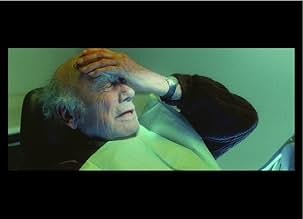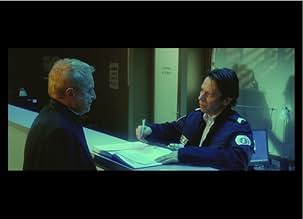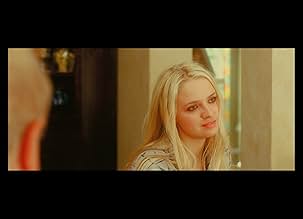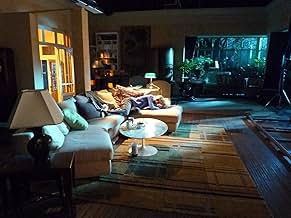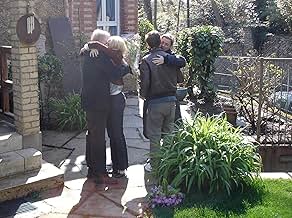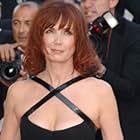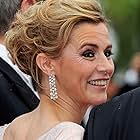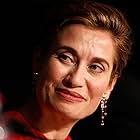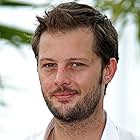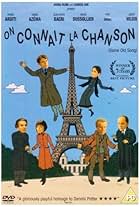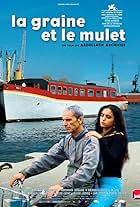A quirky woman who spends her free time as a pilot has her purse stolen; when a mysterious man finds her wallet, they embark on a peculiar romance.A quirky woman who spends her free time as a pilot has her purse stolen; when a mysterious man finds her wallet, they embark on a peculiar romance.A quirky woman who spends her free time as a pilot has her purse stolen; when a mysterious man finds her wallet, they embark on a peculiar romance.
- Awards
- 3 wins & 14 nominations
Michel Vuillermoz
- Lucien d'Orange
- (as Michel Vuillermoz de la Comédie Française)
Edouard Baer
- Le narrateur
- (voice)
Stéfan Godin
- Acolyte aviation
- (as Stefan Godin)
Roger Pierre
- Marcel Schwer
- (as Roger-Pierre)
- Director
- Writers
- All cast & crew
- Production, box office & more at IMDbPro
Storyline
Did you know
- TriviaThe Spitire is a Supermarine Spitfire PR Mk XIX, number PS 890, built in 1945. It is owned by a French collector (as of 2016) and has the French registration code, F-AZJS. Since the film was made, it has been restored to its wartime colours of RAF 152 (Hyderabad) Squadron (which served in South East Asia)
- Crazy creditsThe credits show considerable variation in their presentation. The first credits seen are the individual actor names with the name of the character played, in a serif font, with shadowed letters. These credits are moving left to right across the screen, fading in and out at different points, over a background of the film's name in larger letters, in an italicized serf font. After the first ten actors, there is abrupt change to a sans serif font, again with shadowed text, for both the cast/ characters list and the film title. The film title is now angled up to the right and is not in clear focus. After the names of the cast, the credits start as scrolling white text on a black background using a serif font, then there is a change to a sans serif font and then a return to the serif font. The next change is to black text on a grey background using a serif font. This then reverts to white text on a black background with a serif font, then a change to a sans serif font and then a return to the serif font. These credits do not stay in a central position, but move from side to side on the screen.
- ConnectionsFeatured in At the Movies: Cannes Film Festival 2009 (2009)
- SoundtracksSalue la Lune
Written by Allan Gray and Walter Reisch
Performed by Marguerite's acolytes at the aerodrome
Featured review
Alain Resnais started as a French new wave director and is remembered for creating such classics as Hiroshima, mon amour (1959) and Last Year in Marienbad (1961). He often deals with the layers of memory, yearning, oblivion and death in man. He throws his characters into a story and sees what the fuss occurs. His latest film Les herbes folles or Wild Grass is a psychotic version of the conventional genre of romantic comedy. Les herbes folles is a new kind of comedy; it challenges the limitations of cinema and the fantastic imaginative narrative is something we haven't seen in decades.
A pickpocket steals a wallet of a woman. A man finds the wallet and since it has an ID card within he decides to return it to its owner. After a series of difficulties the woman gets her wallet but the man seems to be hoping for something more between them.
The characterization of the film is simplified but strong, it makes us question the role of a character in fiction. Marquerite (the woman) is purely a fictional figure: red haired dentist who loves flying. Georges (the man) is an ordinary suburban dad who has got a dangerously unstable personality. He thinks about murders and crimes, but is it all fantasy or could he actually do it? The character remains elusive, and I loved it.
Les herbes folles was Alain Resnais' first adaption from a novel, even that he has worked with many famous writers such as Marquarite Duras. Les herbes folles is based on a novel "L'Incident" by Christian Gailly. Alain Resnais has always adored "cheap" literature and the things he got from this small unknown novel amaze me. What I've heard is that Gailly's narrative is minimalist but the narrative of Les herbes folles in obviously the opposite. The 'mise-en-scene' is filled with precisely considered items that yet appear as ordinary furniture. An important addition Resnais made for the novel is the wild grass which grows from the gaps of the asphalt streets. Just as the grass so do the passions and desires of the characters run wild.
The visuality of Les herbes folles is imaginative and enchanting. Already in 1959 Resnais made innovative use of flashback in Hiroshima, mon amour and in Les herbes folles he mixes flashbacks, delusions and fantasies in a very unique, absurd way - overall the film is a courageously playful story. Both the editing and cinematography overwhelmed me they just make this a very aesthetic experience. The scene with the cops is full of close-up, stylized editing and quick zoom-ins and this absurd use of camera just reinforces the Kafkaesque in the entire scene.
Les herbes folles is a new beginning in a way, it's something Resnais has never done before and I hope we will see many great ones by him in the future as well. It's a film which plays around with cinema narrative with stylized editing and simplified characterization. In the end it grows out to be a mature antithesis for brainless romantic comedies and a wonderful aesthetic experience.
A pickpocket steals a wallet of a woman. A man finds the wallet and since it has an ID card within he decides to return it to its owner. After a series of difficulties the woman gets her wallet but the man seems to be hoping for something more between them.
The characterization of the film is simplified but strong, it makes us question the role of a character in fiction. Marquerite (the woman) is purely a fictional figure: red haired dentist who loves flying. Georges (the man) is an ordinary suburban dad who has got a dangerously unstable personality. He thinks about murders and crimes, but is it all fantasy or could he actually do it? The character remains elusive, and I loved it.
Les herbes folles was Alain Resnais' first adaption from a novel, even that he has worked with many famous writers such as Marquarite Duras. Les herbes folles is based on a novel "L'Incident" by Christian Gailly. Alain Resnais has always adored "cheap" literature and the things he got from this small unknown novel amaze me. What I've heard is that Gailly's narrative is minimalist but the narrative of Les herbes folles in obviously the opposite. The 'mise-en-scene' is filled with precisely considered items that yet appear as ordinary furniture. An important addition Resnais made for the novel is the wild grass which grows from the gaps of the asphalt streets. Just as the grass so do the passions and desires of the characters run wild.
The visuality of Les herbes folles is imaginative and enchanting. Already in 1959 Resnais made innovative use of flashback in Hiroshima, mon amour and in Les herbes folles he mixes flashbacks, delusions and fantasies in a very unique, absurd way - overall the film is a courageously playful story. Both the editing and cinematography overwhelmed me they just make this a very aesthetic experience. The scene with the cops is full of close-up, stylized editing and quick zoom-ins and this absurd use of camera just reinforces the Kafkaesque in the entire scene.
Les herbes folles is a new beginning in a way, it's something Resnais has never done before and I hope we will see many great ones by him in the future as well. It's a film which plays around with cinema narrative with stylized editing and simplified characterization. In the end it grows out to be a mature antithesis for brainless romantic comedies and a wonderful aesthetic experience.
- ilpohirvonen
- Jan 10, 2011
- Permalink
- How long is Wild Grass?Powered by Alexa
Details
Box office
- Gross US & Canada
- $403,952
- Opening weekend US & Canada
- $39,162
- Jun 27, 2010
- Gross worldwide
- $4,834,890
- Runtime1 hour 44 minutes
- Color
- Sound mix
- Aspect ratio
- 2.35 : 1
Contribute to this page
Suggest an edit or add missing content



